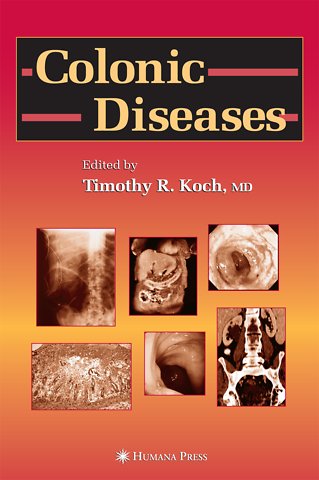Colonic Diseases
Samenvatting
The Scientification of Gastroenterology During the 20th Century * Science contributes to medicine in three ways: It provides a body of relatively secure knowl edge. Some of that knowledge has been applied to develop technologies which have had a major impact upon the practice and effectiveness of medicine. Last, science offers to medicine a way of thinking. - 1. McCormick [(1993) The Contribution of Science to Medicine. Perspect. Bioi. Med. 16,315.] Awareness of the digestive system began with the dawn of civilization, when man, observing the feeding habits of animals in the surrounding environment, experimented with foods, edible and inedible. Identity came with discoveries of the digestive organs during the 16th and 17th centuries. Function was revealed by physiologic studies of digestion, absorp tion and secretion, metabolism, and motility during the 18th and 19th centuries. Diagnostic access improved with the technological advances of the 20th century. Understanding of gas trointestinal (GI) disease followed the growth of the basic sciences and gastroenterology's involvement in scientific research during the latter half of the 20th century. Early in the 20th century, gastroenterology was yet an undefined activity without clinical or scientific guidelines. Diagnostic approach to the digestive tract was minimal. Valid con cepts of disease were lacking. Visceroptosis, sitophobia, and "colonic autointoxication" were common "diagnoses." Therapeutic resources were scarce.
Specificaties
Inhoudsopgave
Absorption-Secretion and Epithelial Cell Function
Pradeep K. Dudeja, Ravinder Gill, and K. Ramaswamy
Normal Motility and Smooth Muscle Function
Mary Francis Otterson
Neural Regulation of Colonic Motor Function
Kenton M. Sanders and Terence K. Smith
Mucin and Goblet Cell Function
Samuel B. Ho and Laurie L. Shekels
Endocrine Cells of the Colon
Sebastian G. de la Fuente, Christopher R. Mantyh, and Theodore N. Pappas
Micronutrients
Emmanuel C. Opara
Aging
Emmanuel C. Opara and Timothy R. Koch
Immunology of the Gastrointestinal Tract
Jonathan R. Fulton, Cynthia A. Cunningham, and Christopher F. Cuff
Colonic Lymphatics
Stacey A. Weiland and Yang K. Chen
Probiotics and the Colon: Therapeutic and Prophylactic Uses
Thomas J. Borody and Patricia L. Conway
Physiology and Pathophysiology of Colorectal Sensory Processes
Michael D. Crowell and Brian E. Lacy
Part II. Investigation of Disease Processes
Oxidative Stress
Emmanuel C. Opara
Genetic Testing for Colon Cancer
Russell F. Jacoby and Carolyn E. Cole
Inflammation
Cynthia A. Cunningham, Jonathan R. Fulton, and Christopher F. Cuff
Epidemiologic Studies and Outcomes Research in Colonic Diseases
John F. Johanson
Colonoscopy
Donald G. Seibert
Interpretation of Colonic Biopsies in Patients with Diarrhea
Sarah M. Dry, Galen R. Cortina, and Klaus J. Lewin
Anorectal Manometry
Devang N. Prajapati and Walter J. Hogan
Endoanal and Endorectal Ultrasound
Lisa M. Gangarosa
Colonic Transit and Motility
William J. Snape, Jr.
Defecography and Related Radiologic Techniques
Vincent H. S. Low
Cross-Sectional Imaging of the Large Bowel
Diego R. Martin, Ming Yang, and Paul Hamilton
Part III. Colorectal Disease
Hirschsprung's Disease and Neonatal Disorders
Carol Lynn Berseth
Acute Megacolon, Acquired Megacolon, and Volvulus
Marc Stauffer and Timothy R. Koch
Diverticular Disease
Gordon L. Telford, Susan W. Telford, and Mary F. Otterson
Current Understanding of Colorectal Neoplasia
Melanie B. Thomas and Robert A. Wolff
Constipation
Anne Lutz-Vorderbruegge and Arnd Schulte-Bockholt
Crohn's Disease
Amit G. Shah and Stephen B. Hanauer
Ulcerative Colitis
Bret A. Lashner
Irritable Bowel Syndrome
Michael Camilleri
Ischemic Colitis
Peter Grübel and David R. Cave
Surgical Treatments for Colonic Diseases
Joseph P. Muldoon and Steven J. Stryker
Anorectal Disorders
Mohammed M. H. Kalan and Bruce A. Orkin
Index

